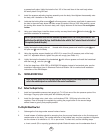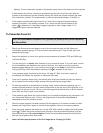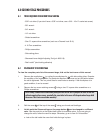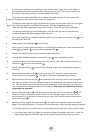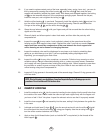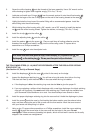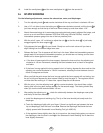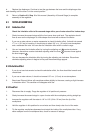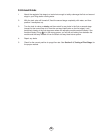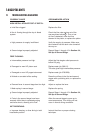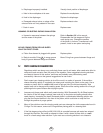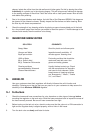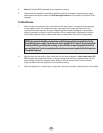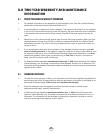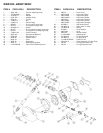
b. Diaphragm improperly installed. Visually check position of diaphragm.
c. Hole in the mouthpiece at tie area. Replace the mouthpiece.
d. Hole in the diaphragm. Replace the diaphragm.
e. Damaged exhaust valve, or edges of the Replace exhaust valve.
exhaust valve not firmly seated on the case.
f. Crack in case. Replace case.
HUMMING OR BUZZING DURING INHALATION:
a. Harmonic resonance between the springs Refer to Section 5.2 in this manual.
and the mass of the piston. Disassemble the first stage and flip the
main spring over. Change the position
of the piston in its bore. If resonance is still
present, install a new piston and spring.
NO AIR COMING FROM DRY AIR BLEED
VALVE ON FIRST STAGE:
a. Piston flow element is plugged with grease Replace piston.
b. Body-to-module O-ring in wrong groove Move O-ring from groove between flange and
body, to groove between flange and threads.
7.2 PARTS CLEANING RECOMMENDATIONS
Regulators which see heavy use, particularly those used in salt water, often need extra effort to
remove dirt and corrosion from the parts of the regulator. Some suggested cleaning solutions
are listed at the end of this section, and there are probably many others being used
successfully. Here are a few general suggestions we can make:
1 Don't expect your cleaning solution to do all the work in a matter of seconds. If the solution
cleans extremely rapidly, it is probably too strong and is etching the finish on the parts. Use a
wooden or plastic stick or a
soft bristle brush to help get rid of the thickest deposits. Take
special care not to damage orifice sealing areas. Dress the orifice sealing areas with a fine-grit
polishing stick or pencil eraser after drying the parts.
2. Immerse only those parts which really need cleaning. With Sherwood's Dry Air Bleed system,
the interior of the first stage is always clean and dry, so the piston and spring should never
need cleaning. Immersing the clean Sherwood piston in contaminated cleaning solution can
plug the flow control element in the face of the piston, which could slow or stop the flow
through the positive air purge system.
3. Many of the solutions used for cleaning metal parts can damage the nitrile compounds found in
O-rings. For this reason, remove all O-rings before placing parts in a cleaning bath.
4. If the first stage moving orifice (p/n29-3106-13A) is corroded because salt water has entered
through the inlet filter, first make an attempt to clean it with a clean lint-free cloth or a
soft
brush in a fresh soapy water solution. If you must use a cleaning solution in an ultrasonic
21
18



